All About Kauri Trees – New Zealand’s Ancient Giants
In my mid-20s I planned an extensive 3-6 month cycling – hiking – camping trip around far flung New Zealand. While researching for that trip I first learned about New Zealand’s unique & massive Kauri trees, one of the country’s many unique native tree species.
Kauris are one of the world’s largest and longest-lived tree species, right up there with the Redwoods and Sequoias of California. Astounding as it is to imagine, Kauris can live to over 3000 years old! Not 300 years. But 3000 years.
In all the world, Kauris live only on New Zealand’s North Island, and then only in the region north of Auckland.
In that region, Waipoua Forest on the northwest coast, harbors one of the few remaining stands of ancient Kauris. Man, did I want to visit that forest and gaze up at those magnificent trees!
Despite my extensive research and detailed planning for a trip to New Zealand back in my 20s, I never got to NZ until this year, 2014, two decades later. But at long last I finally did begin my New Zealand explorations earlier this year with a 3-month trip around the North Island.
Quite amazingly, despite my enthusiasm for the ancient Kauris and having never forgotten about them, I somehow never made it to Waipoua Forest during that trip. I did see Kauri trees in many other places though. I also read about them in several museums & parks and learned to recognize them by sight.
So when I returned to New Zealand recently, starting with a 10-day stay with my cousin Sarah, my top priority was to visit Waipoua Forest. Quite luckily, Sarah was more than happy to oblige. Since she had never been to Waipoua Forest either, driving up there was an adventure for her too.
So the day after I arrived, we set out on a 3-day weekend excursion, destination Waipoua Forest.
It took us 4-5 hours of ceaseless driving through never-ending, undulating green farmlands and hills to reach the forest. Yes, green rolling hills are pretty. But, in all honesty, one hour of pastoral scenery is more than enough for me.
Personally, I prefer considerably more dramatic scenery: rugged rock mountains, cliff-lined oceans, palm-fringed tropical islands, steeply terraced rice fields, that sort of thing. In comparison, pastoral hills are boring, boring, boring. Five hours of rolling green hills was more like torture. lol
But we eventually did reach the forest, where we rented a cabin for the night. The next day, at long last, we finally visited New Zealand’s two most famous Kauri trees – the oldest and the largest Kauris in the world.
Tane Mahuta, ‘Lord of the Forest’ in Maori language, towers over the forest at 51 M / 168 ft tall and with a girth of 15.5 M / 51 ft. The largest Kauri tree in the world. It’s very difficult to comprehend those dimensions in a tree. So here are a few photos to illustrate its massive scale. The tiny purple speck in the photo is me!
Nearby Te Matua Ngahere, ‘Father of the Forest’, is the world’s oldest Kauri. It’s not as tall as Tane Mahuta, but still very impressive at a height of 30 M / 99 ft. It’s girth is a bit larger than even Tane Mahuta – 16 M /53 ft.
Te Matua Ngahere is estimated to be over 3000 years old. Try to grasp that concept for a moment: 3000 years ago was about the year 1000 BC. That was the era of the vast Roman Empire, ancient Israel.
Te Matua Ngahere has been living and growing in that forest throughout the time of the Egyptians, the Babylons, the end of the bronze age and dawn of the iron age. Heck, it’s been living through the entirety of European history! Through the Dark Ages, the Middle Ages, the Victorian era. Through the industrial revolution, WWI and WWII. Through all of that, that tree was quietly growing in a New Zealand forest.
Even much younger Tane Mahuta, estimated to be 1000 years old, has been living since about 1000 AD. That’s when many ‘modern’ European states, including Italy, France and Hungary were born. So Tane Mahuta has been around for most of European history as well.
Now those trees are awe inspiring!
A good question to ask right now, and one that I hope has already seeped into your head, is “Why are there so few ancient Kauri trees remaining?” “Why is tiny Waipoua Forest one of the last remaining stands of the magnificent Kauris” “What happened to them?”
The answer, in short, is Europeans.
Quite shamefully, from the mid 1800s, when Europeans first discovered the magnificent towering Kauris, until the early 1900s, European loggers hacked down almost every single Kauri tree in existence.
In a mere 50 years, trees that had been standing magnificently on the Earth in all their splendor for 2000-3000 years, through all the ages of European history, were methodically hacked down, chopped up, killed. Thousands of 2000 and 3000 year old beauties were murdered by greedy white men.
Now that makes me hurt inside.
I ask you, who could gaze upon such magnificent trees for the very first time and think, “I’d like to cut down that tree.” Who?!
It boggles my mind. All I can say is, “Noooooooooooooooooooooooo !”
But I wasn’t around to say that or do anything. And even if I had been, my opinion would not have mattered.
Quite tragically for the beautiful Kauris, they stand perfectly straight and erect. They have exceedingly dense and durable wood. And that happened to be perfect for sailing ship’s masts. And so, in the great era of sailing & western colonization of the world, the poor Kauris fell victim to ship builders. They were nearly all murdered.
Pause to ponder that tragedy, consider and weep.
Fast forward to today. Visitors to New Zealand can learn all the gory details of the short era of Kauri logging at The Kauri Museum. My cousin Sarah and I passed on that.
Besides the hefty admission fee of $25, we figured we’d feel traumatized more than anything after seeing their displays of young, exceedingly pleased-looking young loggers sitting on top of the giants they’d just butchered.
The best that can be said today is that at least a few ancient Kauri trees were spared. Logging has ended indefinitely. New Zealanders have embarked on a campaign of preserving the few remaining ancient & giant trees. New Zealand also protects younger Kauri trees and promotes the planting and growing of even more Kauri trees, as well as other native trees, bushes and flowers. For now, hopefully forever, the remaining Kauris are safe.
I myself feel very grateful to have finally visited magnificent Tane Mahuta, T T and other ancient Kauris in Waipoua Forest. Great thanks to my cousin Sarah, for taking us to see them.
Reporting from the road, Lash
————————————————–
You might also enjoy:
Photos of the Natural Splendor of North Island, New Zealand
Photos of Stunning Coromandel Peninsula
————————————————————————————————————————-

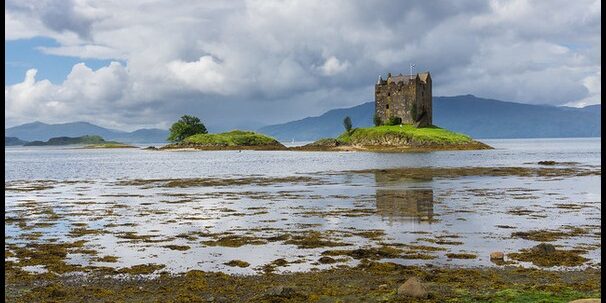





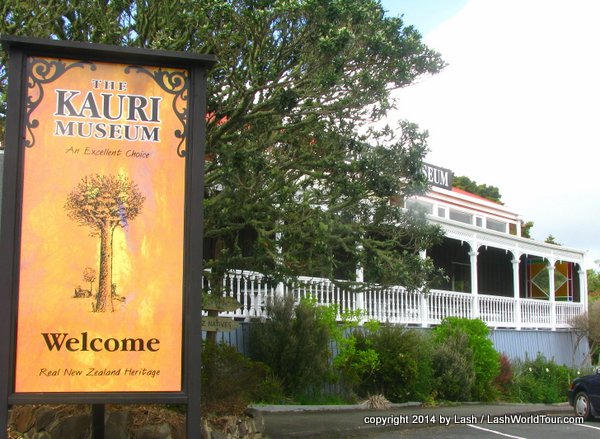

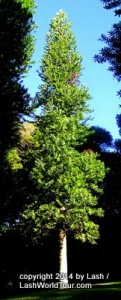
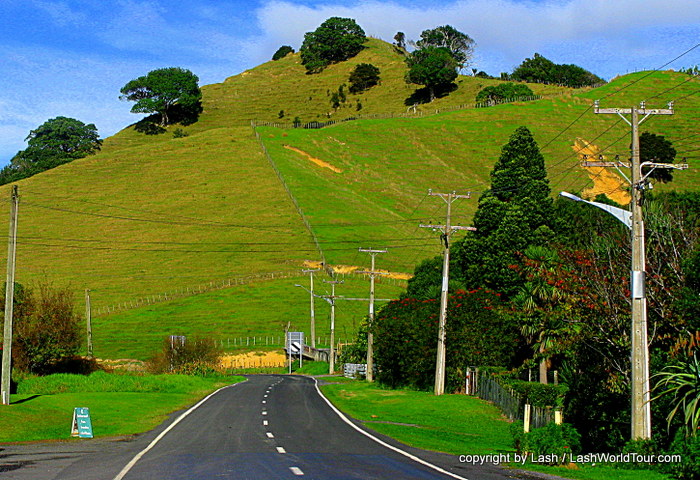
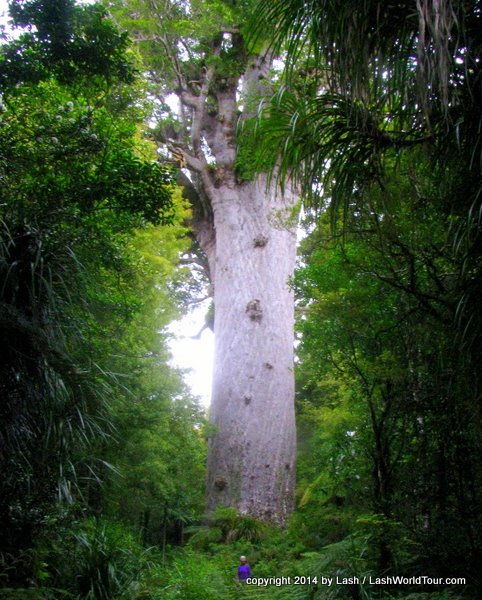
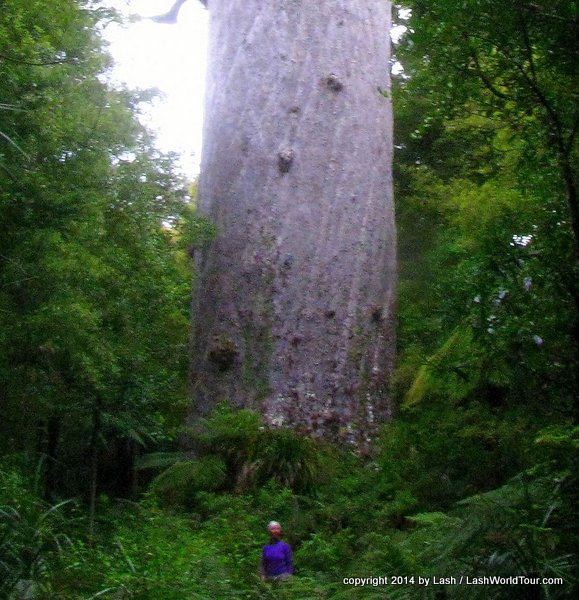
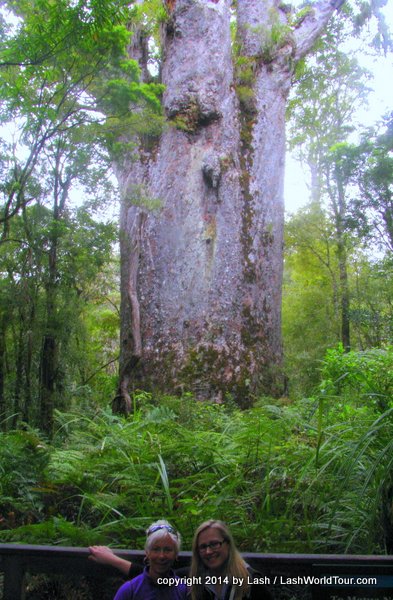
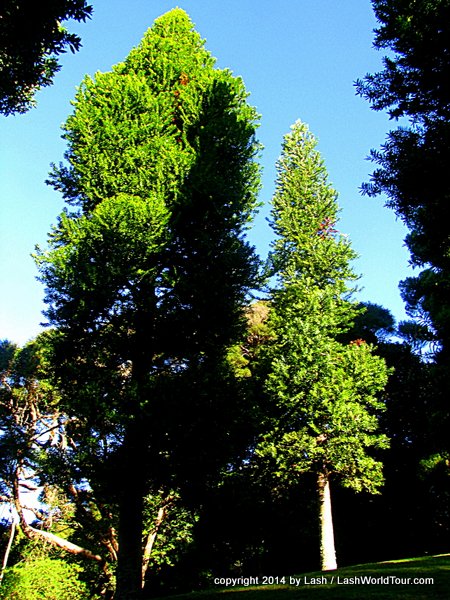

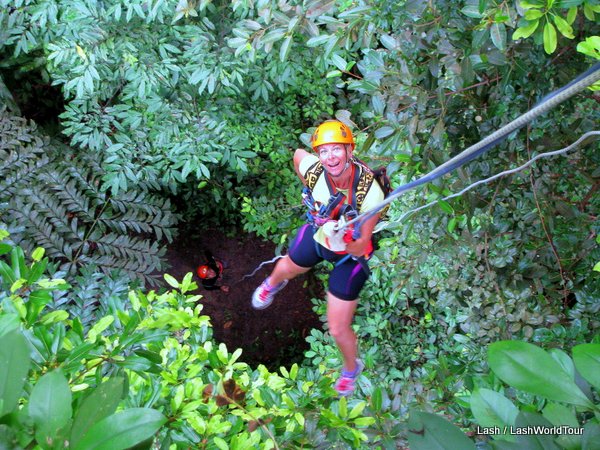
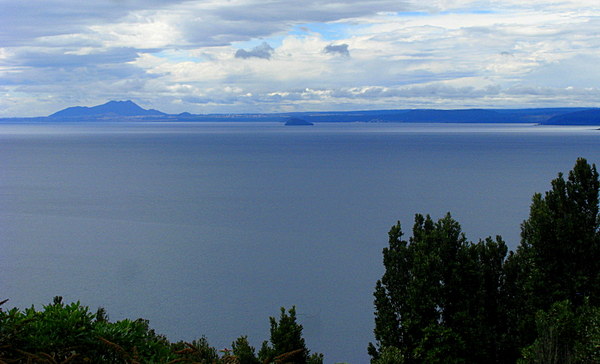


 Hi! I'm Lash, an American nomadic world traveler who's been traveling solo since 1998. I’m passionate about traveling the world nomadically and then sharing it all with you. I hope to inspire you to travel the world, to entertain you with tales from the road, and to help you reach your travel dreams. Welcome!
Hi! I'm Lash, an American nomadic world traveler who's been traveling solo since 1998. I’m passionate about traveling the world nomadically and then sharing it all with you. I hope to inspire you to travel the world, to entertain you with tales from the road, and to help you reach your travel dreams. Welcome! 




2 pings
New Zealand's Famous Abel Tasman Track » LashWorldTour
2014/12/17 at 11:46 am (UTC 8) Link to this comment
[…] All About Kauri Trees: New Zealand’s Ancient Giants […]
My Best Travel Adventures of 2014 » LashWorldTour
2014/12/28 at 3:09 pm (UTC 8) Link to this comment
[…] them, thanks to my lovely cousin, Sarah, who drove us up there one weekend. Thanks, girl! Read All About Kauris. Lash at Bag’s End – Bilbo BAggin’s hobbit hole in […]